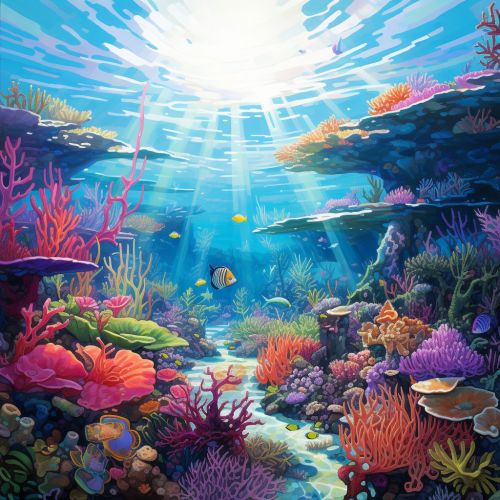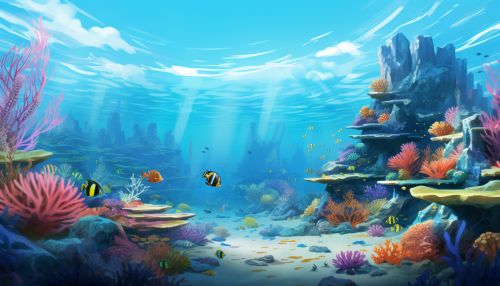Marine Biology
Overview
Marine biology is the scientific study of organisms in the ocean or other marine or brackish bodies of water. Given that in biology many phyla, families and genera have some species that live in the sea and others that live on land, marine biology classifies species based on the environment rather than on taxonomy.
Marine Life
A large proportion of all life on Earth lives in the ocean. The exact size of this proportion is unknown, since many ocean species are still to be discovered. The ocean is a complex three-dimensional world covering approximately 71% of the Earth's surface. The habitats studied in marine biology include everything from the tiny layers of surface water in which organisms and abiotic items may be trapped in surface tension between the ocean and atmosphere, to the depths of the oceanic trenches, sometimes 10,000 meters or more beneath the surface of the ocean.
Marine Habitats and Biodiversity
Marine habitats can be divided into coastal and open ocean habitats. Coastal habitats extend from the shoreline to the edge of the continental shelf. Most marine life is found in coastal habitats, even though the shelf area occupies only seven percent of the total ocean area. Open ocean habitats are found in the deep ocean beyond the edge of the continental shelf.


Marine Microorganisms
Marine microorganisms include protists, bacteria and viruses. Microorganisms constitute more than 90% of the biomass in the sea. They are crucial to nutrient recycling in ecosystems as they act as decomposers. A small proportion of marine microorganisms are pathogenic, causing disease in humans and other organisms.
Marine Plants and Algae
Marine plants and algae provide the basis for nearly all marine life, either directly or indirectly. They are primary producers that generate organic compounds from inorganic substances. These compounds form the basis of the marine food web and are synthesized through the process of photosynthesis, which requires light energy.
Marine Invertebrates
Marine invertebrates include sponges, cnidarians (such as jellyfish), marine worms, molluscs (such as cephalopods and bivalves), arthropods, echinoderms (such as sea urchins and sea stars), and many other phyla. They constitute more than 98% of the known marine species.
Marine Fish
Marine fish are fish that spend some or all of their lives in salt water. These are different from freshwater fish, which live in rivers, lakes, and other bodies of fresh water. Marine fish can be categorized into pelagic fish, demersal fish, and deep-sea fish.
Marine Reptiles
Marine reptiles include sea turtles, sea snakes, and marine iguanas. They have adapted to life in the marine environment. They are an important part of the marine ecosystem and are often top predators.
Marine Birds
Marine birds, also known as seabirds, are species that have adapted to life within the marine environment. They feed on marine animals and are often top predators. Some species are pelagic (spending most of their life far out at sea), while others are more coastal or inland.
Marine Mammals
Marine mammals include cetaceans (such as whales, dolphins, and porpoises), pinnipeds (such as seals, sea lions, and walruses), sirenians (such as manatees and dugongs), and several other species of mammals that have adapted to a marine lifestyle, including sea otters and polar bears.
Threats to Marine Life
Marine life is facing numerous threats such as ocean acidification, plastic pollution, overfishing, climate change, habitat destruction, invasive species, and marine pollution. These threats are causing a rapid decline in the health and biodiversity of the world's oceans.
Conservation of Marine Life
Conservation of marine life involves protecting and preserving the ecosystems in oceans and seas. Marine conservation focuses on limiting human-caused damage to marine ecosystems, and on restoring damaged marine ecosystems. Marine reserves, wildlife refuges, and marine protected areas are all tools used in conservation.
